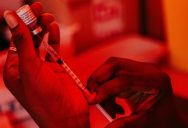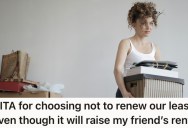HIV Drug With 100% Effectiveness Currently Costs $42,250 A Year, But A Group Of Scientists Is Trying To Make It $40

Researchers have spent decades looking for an HIV vaccine, but even as that has proven difficult, they have given new life and hope to patients thanks to the advent of PrEP (pre-exposure prophylaxis) which makes the undetectable and therefor impossible to pass on to others.
Though a fully preventative option has remained out of reach, a breakthrough HIV drug, touted as the “closest thing we have to a vaccine”, seems close to ready to go to market – and could be produced for significantly less than its current cost.
Lenacapavir, marketed as Sunlenca by US pharma company Gilead Sciences, Inc, was recently approved by the US Food and Drug Administration (FDA) as a treatment in cases where other HIV drugs have failed or are unsuitable, but recent trials are also showing its promise as a potential alternative to PrEP.
The issue? A full first-year course of the treatment costs $42,250 per patient, putting it out of reach for most Americans suffering with HIV.
But a group of scientists and researchers are looking to change that.

Dr Andrew Hill of the University of Liverpool and his colleagues recently presented at a recent conference that the minimum price for a mass-produced generic version of lenacapavir, following the same ingredients and manufacturing process, would be $40 per patient, based on a profit of 30 percent and 10 million annual users.
In reality, they suggest that up to 60 million people a year would need to take the drug to have a marked impact on HIV spread.
“You’ve got an injection somebody could have every six months and not get HIV. That’s as close as we’ve ever been to an HIV vaccine,” Dr. Hill told The Guardian.
Hill and others are pushing Gilead to allow generic licensing through the UN-backed Medicines Patent Pool in all low- and middle-income countries (LMICs), which account for 95% of HIV infections. “Similar mechanisms have been in place in the HIV treatment market for decades, where wealthy countries pay higher prices than poorer ones,” according to The Guardian.
The drug was proven to have “100 percent efficacy” according to Dr Linda-Gail Bekker, a principal investigator of a trial in 5,000 people in Uganda and South Africa. A clinical trial focusing on historically underrepresented groups in HIV research was announced earlier this year, as well, and hopes are high for similar success.
“For a young woman who struggles to get to an appointment at a clinic in a town or who can’t keep pills without facing stigma or violence,” Dr Bekker explained, “an injection just twice a year is the option that could keep her free of HIV.”
For its part, Gilead is quick to remind that the drug is still in its investigation stage, but that they were “prioritizing speed to enable the most efficient path for the regulatory approval of twice-yearly lenacapavir for PrEP in countries that account for most of the global disease burden.”

Though Gilead mentions their focus on providing the drug to “people living in low- and lower-middle-income countries”, the current pricing structure is not in line with that mission.
“You have a miracle tool that could transform access […], for young women in Africa who could be freed from the stigma and fear of being attacked just for being seen swallowing tablets,” said UNAIDS executive director Winnie Byanyima in a direct plea to Gilead at the conference, as reported by Pharmaceutical Technology.
“Right now, Gilead, lenacapavir is priced for rich countries – this inequality never served us well in HIV response.”
Hopefully empathy will win out over greed in this potential life-saving battle.
If you found that story interesting, learn more about why people often wake up around 3 AM and keep doing it for life.

Sign up to get our BEST stories of the week straight to your inbox.




